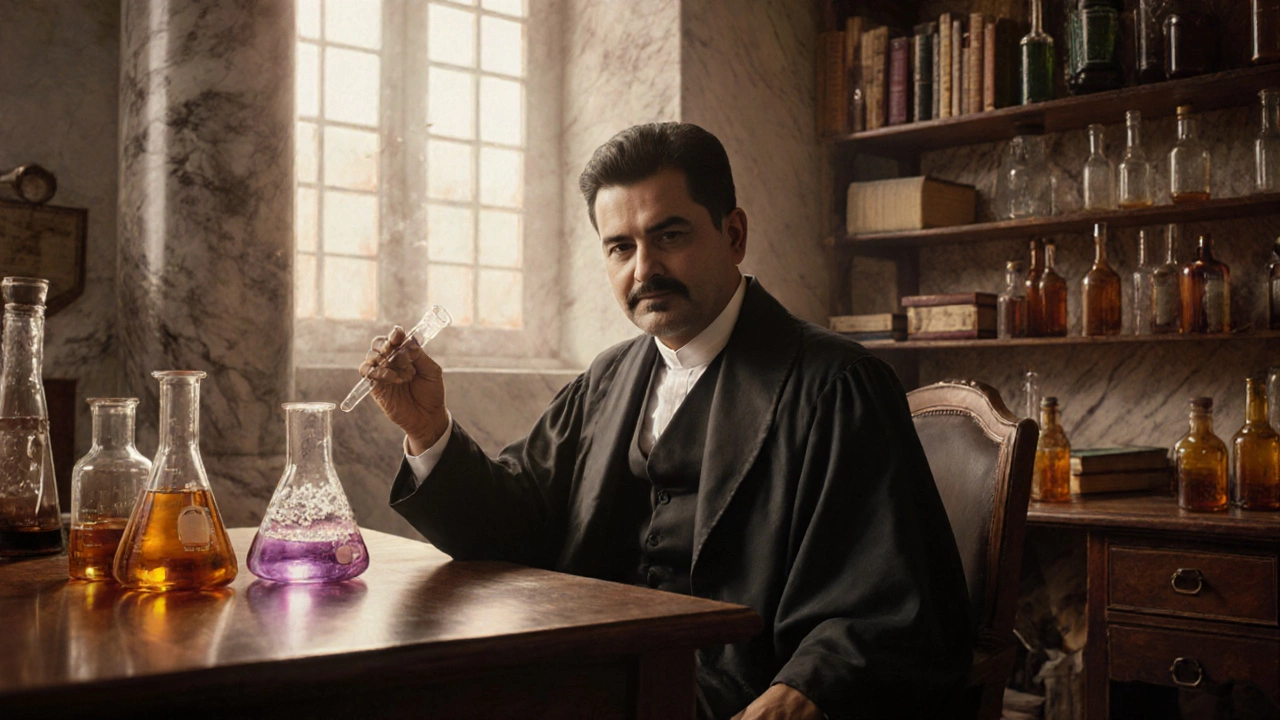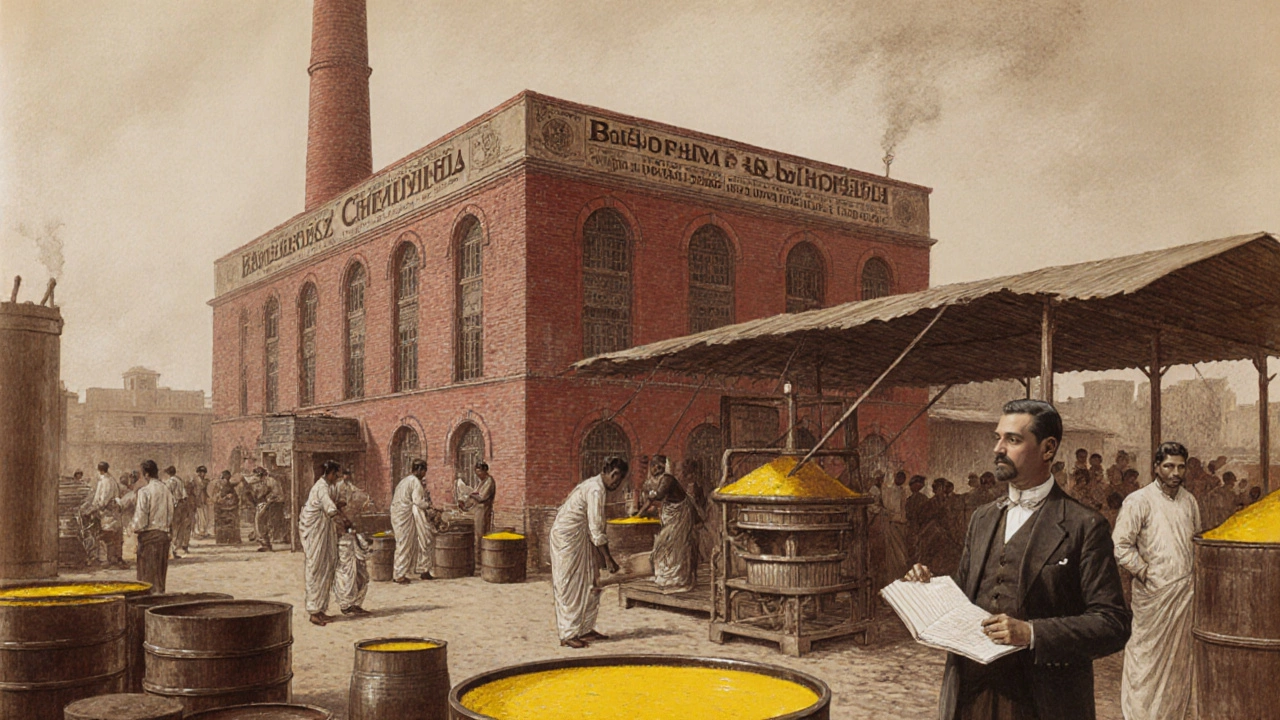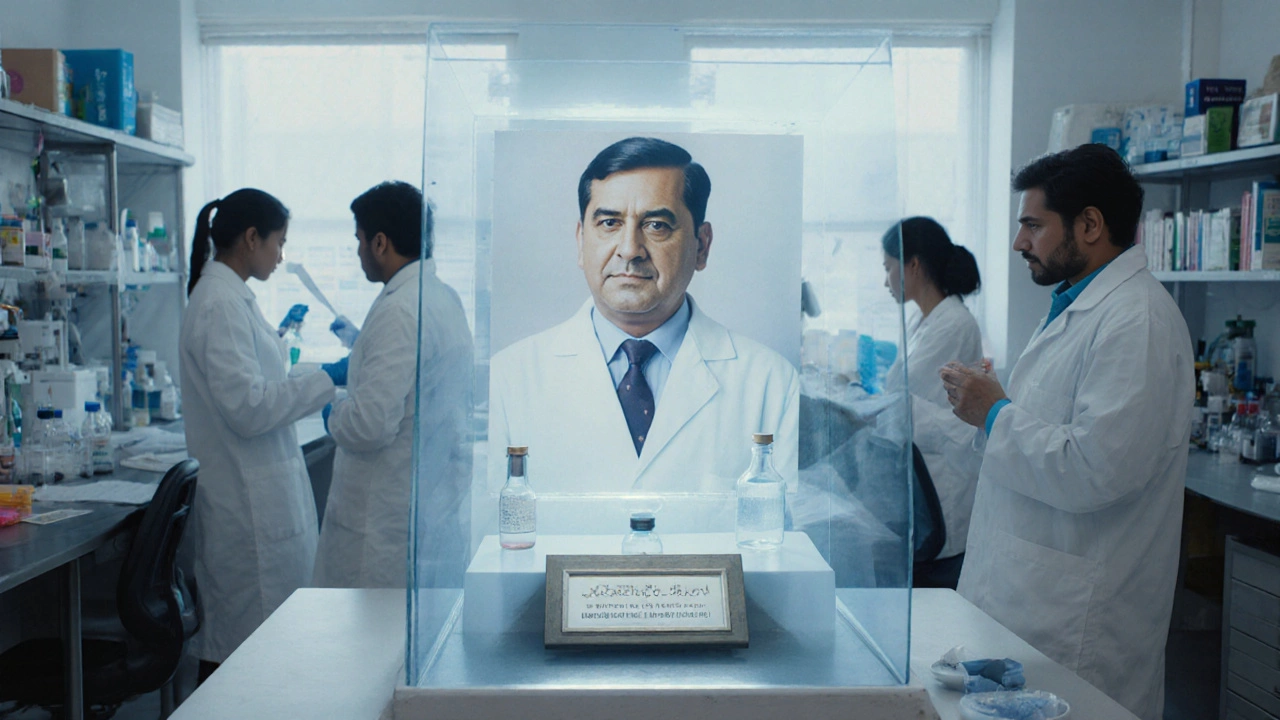Who is the ‘God of Chemistry’ in India? Meet Prafulla Chandra Ray

Prafulla Chandra Ray - The God of Chemistry Quiz
About Prafulla Chandra Ray
Prafulla Chandra Ray (1861–1944) is widely recognized as the 'God of Chemistry' in India due to his groundbreaking contributions to chemical research, entrepreneurship, and education. This quiz tests your understanding of his life and achievements.
Key Takeaways
- Prafulla Chandra Ray is widely celebrated as the father-or "God-of chemistry" in India.
- He founded Bengal Chemicals & Pharmaceuticals, the oldest Indian pharmaceutical company.
- Ray’s research on mercuric nitrite and mustard oil laid the groundwork for modern Indian chemical industry.
- His legacy lives on through the Indian Chemical Society, the P.C. Ray Memorial Medal, and several academic institutions.
- Contemporary Indian chemists like C.N.R.Rao continue the tradition of world‑class chemical research.
When you hear the phrase “God of chemistry in India,” most historians point to Prafulla Chandra Ray - a pioneering chemist, educator, and entrepreneur who lived from 1861 to 1944. He is credited with establishing modern chemical research in the country, founding the first Indian pharmaceutical firm, and inspiring generations of scientists. His story blends scientific discovery with nation‑building, making him a cultural icon as much as a scientific one.
Early Life and Education
Born in Radhanagar, Bengal Presidency, Ray grew up during a time when India’s higher education system was still under British control. He earned a B.Sc. from the University of Calcutta and then received a scholarship to study at the University of Edinburgh, where he obtained his D.Sc. in 1889. His thesis on the chemistry of mercuric nitrite earned him early recognition and set the stage for his lifelong focus on inorganic chemistry.
Groundbreaking Research
- Mercuric Nitrite Studies: Ray’s work clarified the composition and reactivity of mercuric nitrite, a compound essential for early antiseptic formulations.
- Mustard Oil Exploration: He isolated a purer form of mustard oil, improving its safety for culinary and medicinal uses.
- Permanent Yellow Dye: In 1906 he synthesized a stable yellow pigment that found applications in textiles and printing.
Each of these achievements addressed practical problems faced by Indian industries at the turn of the 20thcentury, reinforcing why he earned the moniker “God of Chemistry.”

Founding Bengal Chemicals & Pharmaceuticals
In 1901 Ray launched Bengal Chemicals & Pharmaceuticals (BCP) with a modest capital of ₹5,000. It started as a laboratory producing mercuric nitrite and later expanded into a full‑scale drug manufacturing plant. BCP’s first major product, “Ray’s Pure Mercuric Nitrite,” became a staple antiseptic across the subcontinent.
The company’s growth mirrored India’s industrial aspirations: it hired local talent, sourced raw materials domestically, and exported products to Southeast Asia. Even after nationalization in the 1970s, BCP remains a testament to Ray’s vision of self‑reliant chemical production.
Academic Leadership and Institution Building
Beyond the lab, Ray served as a professor at the University of Calcutta, where he introduced modern laboratory techniques and mentored future luminaries. In 1905 he helped establish the Indian Chemical Society, providing a platform for Indian chemists to publish research and collaborate.
His dedication to education earned him the title "Sir" after being knighted in 1917, but more importantly, it cemented his status as a nation‑builder who used chemistry to advance public health and industry.
Recognition and Awards
- 1917 - Knighted by the British Empire for contributions to science.
- 1933 - Awarded the Rashtrapati Award (later known as the Padma Shri) for public service.
- Posthumously, the Indian Chemical Society instituted the P.C. Ray Memorial Medal, one of the highest honors for chemists in India.
Legacy in Modern Indian Chemistry
Ray’s influence extends to contemporary research hubs like the Indian Institute of Science (IISc) and the Indian Academy of Sciences. His emphasis on practical applications paved the way for today’s pharmaceutical giants such as Dr. Reddy’s Laboratories and Sun Pharma.
Another towering figure, C.N.R.Rao, often dubbed the “father of modern Indian chemistry,” builds on Ray’s foundation, especially in solid‑state chemistry and nanomaterials. While Rao focuses on cutting‑edge materials, Ray’s legacy lies in creating the institutional and industrial framework that makes such research possible.

Comparing P.C.Ray and C.N.R.Rao
| Attribute | PrafullaChandraRay (1861‑1944) | C.N.R.Rao (born 1934) |
|---|---|---|
| Primary Field | Inorganic & Industrial Chemistry | Solid‑state & Materials Chemistry |
| Signature Achievement | Founding Bengal Chemicals & Pharmaceuticals | Discoveries in high‑temperature superconductors |
| Institutional Impact | Indian Chemical Society, Indian Academy of Sciences | Indian Institute of Science, numerous international collaborations |
| Awards | Knighthood, Rashtrapati Award, P.C. Ray Medal (posthumous) | Padma Vibhushan, Bharat Ratna (2022) |
| Publications | ~30 research papers, several textbooks on chemical methods | Over 1500 papers, 40 books and monographs |
Why the Title ‘God of Chemistry’ Resonates
The phrase captures both reverence and mythic stature. In a country where science was once a colonial import, Ray’s self‑started enterprise and commitment to indigenous research felt almost divine. He proved that world‑class chemistry could thrive without dependence on foreign labs, inspiring a sense of national pride.
Moreover, his work intersected with everyday life-purifying medicines, improving cooking oils, and creating dyes for fabrics. When a scientist’s discoveries touch daily routines, people tend to elevate them to iconic status.
How to Honor Ray’s Contributions Today
- Visit the P.C.Ray Museum in Kolkata to see original lab equipment.
- Support Indian startups focusing on green chemistry, echoing Ray’s sustainable approach.
- Engage with the Indian Chemical Society’s webinars that regularly cite Ray’s papers.
- Encourage schools to include a module on Ray’s life in science curricula.
- Read his autobiography, “My Life and Work,” for personal insights.
Frequently Asked Questions
Why is Prafulla Chandra Ray called the ‘God of Chemistry’?
Ray pioneered modern chemical research in India, founded the country’s first major pharmaceutical company, and created institutions that still nurture chemists today. His impact was so profound that the public and scholars often refer to him with divine admiration.
What were Ray’s most important scientific discoveries?
Key discoveries include the synthesis of mercuric nitrite, purification techniques for mustard oil, and the development of a durable yellow dye used in textiles.
Is Bengal Chemicals still operating?
Yes. After several ownership changes, the company continues to produce chemicals and pharmaceuticals, honoring Ray’s original mission of self‑reliance.
How did Ray influence modern Indian pharma giants?
His emphasis on local production, quality control, and research‑driven product development set standards that companies like Dr. Reddy’s and Sun Pharma still follow.
Are there awards named after Ray?
The Indian Chemical Society presents the P.C. Ray Memorial Medal annually to recognize outstanding contributions in chemical research.
Understanding why Prafulla Chandra Ray is revered as the “God of Chemistry” offers a window into India’s scientific awakening. His blend of discovery, entrepreneurship, and education created a blueprint that continues to shape the nation’s chemical and pharmaceutical landscape.





